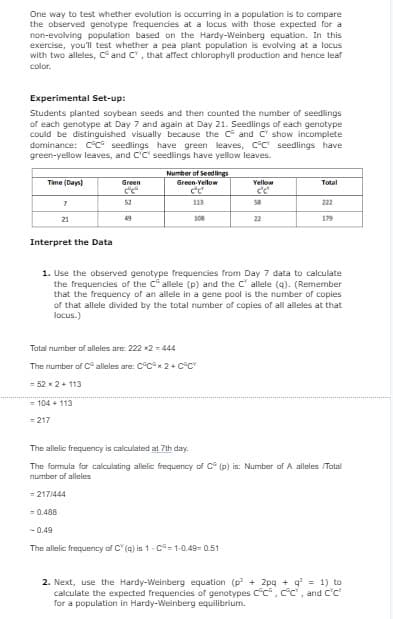2. Next, use the Hardy-Weinberg equation (p + 2pg + g = 1) to calculate the expected frequencies of genotypes c°c, c°c, and c'c for a population in Hardy-Weinberg equilibrium.
Evolutionary Genetics
Evolution is known as continuous changes that occur to adjust organisms in their changing environment over many generations. Various theories have been proposed to illustrate the origin of life and organic evolution. The most accepted one is the theory of natural selection by Charles Darwin. According to his postulate, organisms undergo a struggle for existence due to overproduction. To survive in nature, they acquire variations. The inheritable variations are selected by nature, and it leads to the survival of the fittest.
Phenotype Frequency
The majority of populations have a certain degree of variation in their genetic pools. Scientists can predict the genetic variation happening over time by measuring the amount of genetic variation in a population and these predictions assist them in gaining important insights into the processes that allow organisms to adapt to the environment or to develop into new species over generations. This process is referred to as the process of evolution.
Hardy Weinberg Equilibrium
The frequencies of allele and genotype were maintained constant from one generation to another due to the absence of other evolutionary forces. It is otherwise called the Hardy Weinberg principle the field of population genetics.
Please Answer problem number 2
Next, use the Hardy-Weinberg equation (p2 + 2pq + q2 = 1) to calculate the expected frequencies of genotypes CGCG , CGCY , and CYCY for a population in Hardy-Weinberg equilibrium.

Trending now
This is a popular solution!
Learn your way
Includes step-by-step video
Step by step
Solved in 2 steps with 2 images


